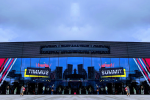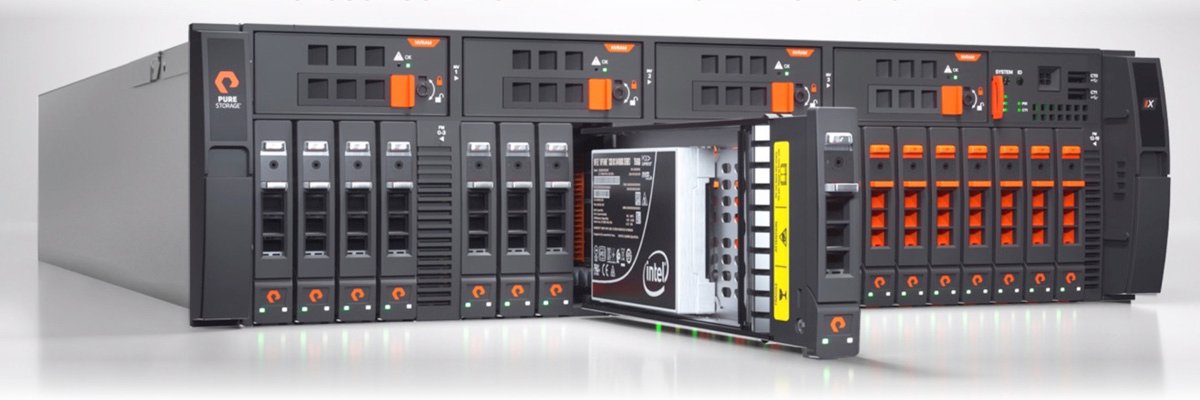3dprintingindustry.com
Our series on the state of investment in the 3D printing industry continues with a company uniquely positioned to understand the dynamics of the additive manufacturing investment landscape. I spoke with Arno Held, Managing Partner at Bavaria-based VC firm AM Ventures.AM Ventures roster of portfolio companies now stands at 20, with a fund of EUR100M raised to back industrial 3D printing ventures. In total 40 investments have been made, with some portfolio enterprises receiving multiple funding rounds. Investments include, DyeMansion, Conflux Technology, and Lithoz. While AM Ventures portfolio spans the globe, it is interesting to note that state capital Munich recently overtook Berlin in terms of startup fundraising for 2024. Perhaps the California of Europe vision of Minister-President of Bavaria Markus Sder for the region is nearing closer?During a conversation with the investing shot-caller and steward, the overarching narrative is clear: additive manufacturing has moved from a hype cycle to a more grounded, methodical growth phase. The shift from fund-anything-hardware to a more disciplined approach underscores the maturing of the additive manufacturing (AM) ecosystem, forcing companies to demonstrate real-world viability. Tightened conditions in the past 18+ months have forced many startups to pivot, seek emergency capital, or restructure. Yet, Held sees signs of renewed confidence by 2025. A post-reset landscape suggests that stronger companies, those that survived the downturn, are poised for healthy growth. This timing might offer investors opportunities at more rational valuations.Arno Held of AM Ventures. Photo via Tobias Hase.Read more in our State of Investing in 3D Printing series.Investing in industrial 3D printingAM Ventures was founded almost exactly a decade ago, in February 2015; since then, investors have shifted their attention to start-ups capable of demonstrating tangible results. We tend to look more into more mature businesses that have delivered more proof points than just ten pages of Excel and ten pages of PowerPoint, says Held. Years ago, nearly anything that looked and smelled and sounded like a 3D printer could secure funding, he observes. Today, backers insist on a more substantial track record; ideally, evidence of repeatability, quality output, and a concrete customer base. When I initially closed the fund in 2021, I thought that would be the happy end, says Held. Then I realized thats when the work really starts.This risk aversion has tightened due diligence requirements, with many funds no longer content to invest in unproven hardware concepts. Helds team increasingly expects an industrial partner, stable processes, and measurable production advantages. At the same time, opportunity pipelines have expanded. Founders now frequently submit business plans directly via the AM Ventures website, illustrating the brands prominence. A global network of conferences, academic partners, and portfolio firms continually feeds new leads, while corporate board participation allows insiders like Held to track emerging customer demands.Regional challenges persist. Asias share of emerging companies in additive manufacturing is growing, yet investors based in Europe or the United States struggle to evaluate teams in unfamiliar markets. The complexity of assessing foreign entrepreneurs capabilities and intentions creates uncertainty. Held says it is still extremely difficult for Western investors to judge these opportunities early.Data limitations also hinder strategic decision-making. While public forums, industry gatherings, and corporate relationships help identify fresh candidates, much expertise remains hidden inside large organizations. Held cites a German saying: If Siemens knew what Siemens knows. The implication is that while deep technical knowledge is scattered across the sector, few have found a systematic means to unearth it. Without direct insight, investors rely on partial information, instinct, and a network of trusted contacts, reinforcing the shift toward start-ups that can clearly prove their worth.Additive manufacturing startups need stronger internal competencies, such as the early hiring of a CFO to ensure sound financial navigation. Teams must also show maturity, foresight, and a willingness to engage with challenging what-if scenarios. Not every entrepreneur should take on venture capital; alignment between founders and investors is critical.The investment horizon spans years, with hardware typically requiring six years from R&D to reliable commercialization. Software, as well as application-focused ventures, can achieve progress more quickly, potentially in a timeframe half of that for hardware.Conflux Technology product group shot and liquid-liquid heat exchanger. Photo via Conflux TechnologyInvestment Trends in Additive ManufacturingMarket conditions have tightened, but recent signs point to renewed optimism by 2025, as both industry adoption and investor sentiment improve.Many businesses are shifting strategies to remain viable. AM Ventures Managing Partner, describes the situation as an interesting point in time to be an established venture capital investor in additive manufacturing, given the amount of emergency calls coming in from companies struggling to secure new capital. One portfolio firm recently raised $5 million but only after enduring around 200 meetings with prospective backers, a process Held describes as having consumed critical resources for months.Recent data shared by AM Ventures indicates a contraction in late-stage funding. The number of such rounds across the additive manufacturing sector appears to have fallen sharply, dropping from 142 observed late-stage rounds in 2021 to only 17 deals in 2023. Despite these figures, some renewed signs of activity have emerged. While the first half of 2024 the year offered little respite, Held says, Q3 felt a little bit like the turnaround point.In the broader German market, startups raised EUR 7.4 billion in 2024 according to KfW research, with a total of 144 exits.According to Held, metal-based additive manufacturing businesses have begun to demonstrate stronger fundamentals and attract greater investor confidence than their polymer-focused counterparts. Demand appears particularly robust in energy, transport, and infrastructure segments. Electrification, encompassing mobility on roads, rails, and in the air, along with oil and gas, now ranks among the key growth drivers for these technologies.Overall, early-stage investors have grown more selective, often expecting founders to show a track record of scaling revenues beyond initial prototypes. Series B rounds, typically well into a companys commercial development, have become increasingly rare. Yet this market reorientation also suggests that stronger companies able to demonstrate genuine production breakthroughs could ultimately emerge healthier from a period of protracted capital scarcity.Some investors have begun to acknowledge that past forecasts for additive manufacturing were overly optimistic. Additive manufacturing cannot solve all of the problems. Its not the ultimate weapon for everything. Early exuberance led to aggressive fundraising and lofty company valuations, some reaching revenue multiples in the hundreds. A prime example was the public listing of Desktop Metal, which Held cites as having gone public at a valuation of around $5 billion on revenues of approximately $25 million, creating 200x revenue multiples.Capital once flowed abundantly into hardware-centric ventures, often pushed by investors with a background in software. Held notes that these backers assumed startups would scale as quickly as digital platforms. When the market confronted the practical challenges of scaling manufacturing technologies, expectations began to reset rapidly. Held observes that while capital deployment became more difficult overall, the amplitudes in the United States are much, much more dramatic, so the highs are much higher and the lows are much lower, whereas in Europe, its a bit milder. Dry powder (uninvested funds) remains, yet investors now seem more cautious, rethinking valuations and focusing on business fundamentals instead of inflated growth projections.A section of the POLYLINE project with automated systems of Grenzebach, DyeMansion and EOS, located at the Additive Manufacturing Campus of BMW. Photo via DyeMansion.Picking the winners: how to get your 3D printing start-up fundedAM Ventures focus has increasingly shifted from generic hardware concepts toward ventures backed by solid operational structures. If a team has defined not only how they work together in the future, but also what happens if they separate ways, says Held, its a very good indication that they are pros.The people behind any start-up are paramount to an investment decision. Funding a team of recent graduates often involves waiting several years for technology to reach market maturity. In contrast, older entrepreneurs, or industry silverbacks with sectoral expertise, may be expected to secure early profits through niche products and then replicate success iteratively.A decade of experience has sharpened the criteria for evaluating investment pitches. Red flags include a lack of preparation, excessive spending, for example on legal counsel, at too early a stage, and presentations that reintroduce fundamental concepts, such as the workings of FDM printing, to a seasoned investor already immersed in the technology. Ultimately, the pitch deck serves as a proxy for how founders think and organize their priorities rather than as a definitive plan. A pitch deck is obsolete at the moment of investment, Held remarks. Its about understanding how these people structure their world. Early conversations are designed to test whether entrepreneurs will react constructively to setbacks and maintain the resilience necessary for sustained growth.The evaluation process involves mapping total addressable market size (TAM), serviceable market segments, and defining a path from a niche foothold to broader adoption. Meanwhile, IP filings, market adoption rates, and customer feedback help validate product relevance. Start-ups leveraging standardized machinery, materials, and softwareparticularly in well-defined application areasare considered primed for profit generation. This approach reflects investors preference for strong fundamentals over untested ideas, steering capital toward teams ready to manage the financial and operational demands of sustainable growth.The emphasis now is on a patient, knowledge-driven model that prioritizes proven expertise and strategic partnerships over unrealistic pledges of overnight breakthroughs.Consolidation and Opportunities on the horizonArtificial intelligence, particularly in parameter development, materials qualification, and quality assurance, is seen as a powerful enabler of productivity and innovation. The path forward involves integrating additive manufacturing into established production chains, leveraging external partnerships, and maintaining realistic valuations and growth expectations.Looking ahead, the firm sees reasons for cautious optimism. After more than 18 months of subdued activity, 2025 may bring renewed confidence. Held attributes this to improving conditions in core verticals and growing recognition that additive manufacturing, integrated into established value chains, can deliver sustained benefits.There are some really good signs that AM has been adopted by various verticals, Held notes, predicting that the easing of recent uncertainties, particularly those cited in US markets, may prompt stable growth. He suggests that for those already invested, and for newcomers to the sector, 2025 could present an opportunity to secure interests in promising companies at rational valuations, with realistic timelines and robust operational strategies.A perennial question of continued relevance is whether the 3D printing industry is consolidating. 2025 will be an exciting year for the AM industry. It started with lots of turmoil and incumbents focusing on themselves and sorting out their internal issues, says Held. I am confident that this year, we will also see the dust settling and high levels of consolidation activity to happen in the second half of the year. In contrast to horizontal diversification strategies of the past, we will see much more vertical integration through application-specific acquisitions.Dont miss the upcoming articles in our State of Investment in 3D Printing series; subscribe to the 3D Printing Industry newsletter.To stay up to date with the latest 3D printing news, follow 3D Printing Industry on LinkedIn.You can also find us on Twitter, and Facebook.The featured image shows Formnext Frankfurt. Photo by Michael Petch.Michael PetchMichael Petch is the editor-in-chief at 3DPI and the author of several books on 3D printing. He is a regular keynote speaker at technology conferences where he has delivered presentations such as 3D printing with graphene and ceramics and the use of technology to enhance food security. Michael is most interested in the science behind emerging technology and the accompanying economic and social implications.












